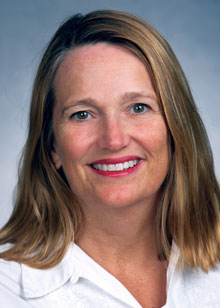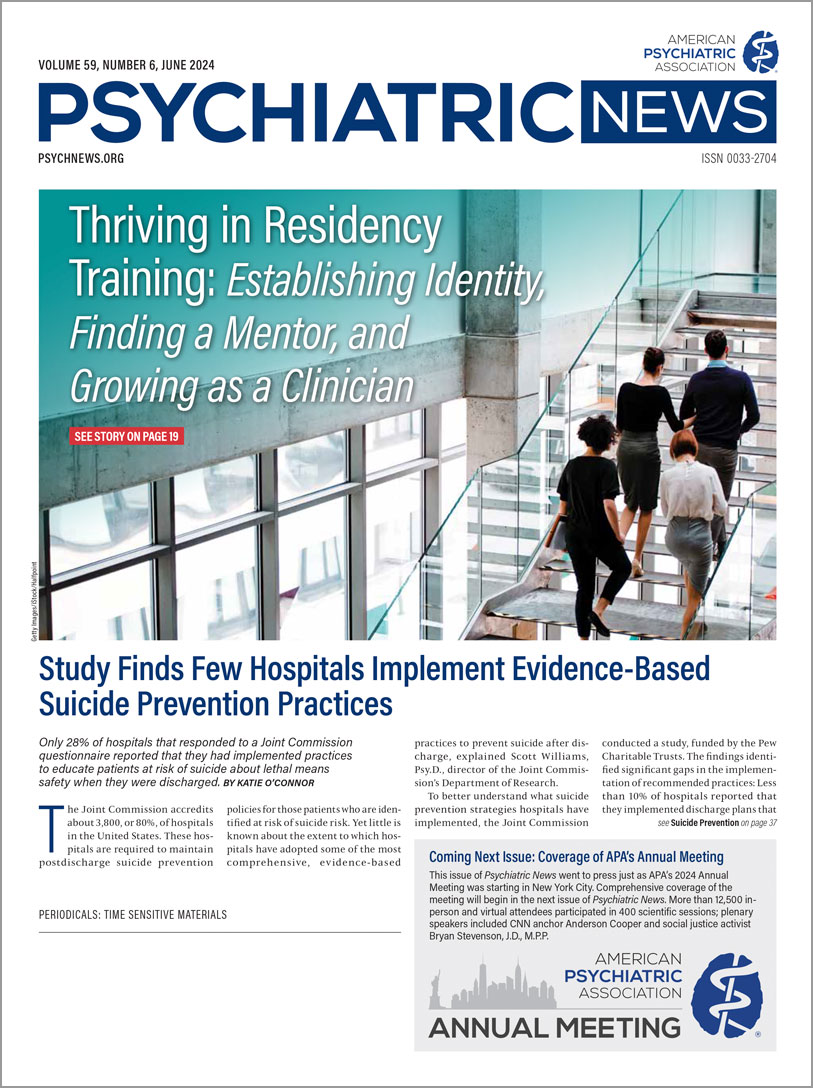Individuals at clinical high risk (CHR) for psychosis receiving antipsychotic medication as part of an early intervention program in Italy showed greater improvement in positive and negative symptoms at two-year follow-up than individuals not receiving medication, according to
report in
Schizophrenia Bulletin.
Those receiving antipsychotics tended to be older, have more severe symptoms and poorer functioning at presentation to the clinic, and more past hospitalizations. Despite the more severe profile, patients receiving antipsychotics did not have significantly worse rates of symptom remission or transition to psychosis at two years than CHR individuals who did not receive antipsychotics.
Using antipsychotic drugs in individuals at clinical high risk is “a complex and contentious issue” for which real-world practices often differ from official guidelines, noted lead author Lorenzo Pelizza, M.D., of the University of Bolonga, Italy, and colleagues in the study. “Reported baseline antipsychotic usage rates in CHR subjects can be as high as 70%, contradicting international guidelines recommending a cautious approach,” they wrote. “However, expert groups offer divergent opinions, with some cautioning against antipsychotic use due to potential side effects, self-stigmatization, and limited evidence supporting the prevention of psychosis transition, while others exclusively recommending short-term, low-dose second-generation antipsychotics for severe CHR symptoms when psychosocial interventions are ineffective.”
(The APA Practice Guideline for the Treatment of Patients With Schizophrenia does not address management of clinical high risk or attenuated psychosis patients; research in that area represents an entirely different body of evidence than was included in the systematic review for the guideline.)
The researchers examined the prevalence of antipsychotic prescription along with baseline and follow-up clinical data for 180 high-risk patients (50% male with an average age of 19 years) enrolled between January 2016 and December 2021 in the “Parma At-Risk Mental States” (PARMS) program; PARMS is an early intervention initiative implemented across adolescent and adult mental health services in the Parma Department of Mental Health, Northern Italy. All subjects completed the Positive and Negative Syndrome Scale (PANSS) and the Global Assessment of Functioning (GAF) scale both at baseline and every 12 months for two years.
In the total cohort of CHR patients, 140 individuals met criteria for attenuated psychosis syndrome, 30 met criteria for Brief Limited Intermittent Psychotic Symptoms (BLIPS), and 10 met “genetic vulnerability” criteria.
At entry, 92 participants were taking antipsychotic drugs. Of those, 60 (33.3% of the total sample) were taking low-dose medication (less than 10 mg/per day of olanzapine or equivalent) and 32 (17.8%) were taking high-dose medication. The remaining 88 individuals (48.9%) were antipsychotic naïve. All prescriptions were for less than one month in the current illness episode.
Patients receiving high- and low-dose antipsychotic medications were older (average age 21) than those in the antipsychotic-naïve group (average age 18). Both high and low dose groups had significantly higher positive symptom scores on PANSS and lower scores on the GAF at baseline. Of the 32 patients receiving high-dose antipsychotic medication, 15 had a past hospitalization compared with just seven among the 88 antipsychotic-naïve patients.
Patients receiving antipsychotics also had higher rates of mood stabilizer and benzodiazepine prescriptions. This “seems to suggest a greater clinical complexity, also possibly indicative of comorbid affective and anxiety disorders (which may go beyond the attenuated psychotic symptoms usually measured),” the researchers wrote.
Most patients in both the high and low dose groups (78% and 83%, respectively) achieved remission on the PANSS score at two years.
Pelliza and colleagues also raised the possibility that antipsychotic-treated CHR patients (especially those receiving high-dose or polytherapy) may represent false-false positives. “These individuals, while meeting CHR criteria, may in actuality be exhibiting signs of a partially treated psychosis,” they wrote.
Kristin Cadenhead, M.D., principal investigator for the NIMH “Predictors and Mechanisms of Conversion to Psychosis” study, who reviewed the report for Psychiatric News, said it provides a valuable commentary on the complexity of using antipsychotic medication in young people meeting CHR criteria who have a 20% to 30% risk of developing a psychotic illness.
“The use of antipsychotics is generally not recommended as a first-line treatment in CHR,” she said. “The literature also shows that individuals meeting CHR who have more symptoms are often treated with antipsychotics and are more likely to convert to a psychotic illness.
“The authors suggest that antipsychotic prescriptions may be more of a proxy for severity of symptoms and functioning (and increased psychosis risk) while also noting that the practice of prescribing antipsychotics varies by practitioner,” she continued. “In addition, the authors raise the important point that antipsychotics can alter the initial presentation of symptoms and ‘mask’ a formal psychosis due to ongoing treatment, confounding the assessment of risk and prognosis.”
Cadenhead said future studies of antipsychotic effects on CHR participants over time could be improved by identifying the participants who are at the very highest risk for psychosis. “There are several psychosis risk calculators, including one from the
North American Prodome Longitudinal Study (NAPLS) that identify those at the very highest risk based on clinical, demographic, and cognitive variables. It may be that we would see a reduction in conversion rate among this highest risk group.”
The NAPLS risk calculator is
described in the July 2016 issue of
The American Journal of Psychiatry.
She added, “It is possible that the high antipsychotic use group in this study is at higher risk of affective psychosis given the high rate of [those who met BLIPS criteria] and mood stabilizer prescriptions. This would suggest that they would be more responsive to antipsychotic treatment and likely to improve functionally.”
Cadenhead said future studies in this area require larger sample sizes. “This area of research is very complex with so many confounding variables that are difficult to effectively control.” ■

